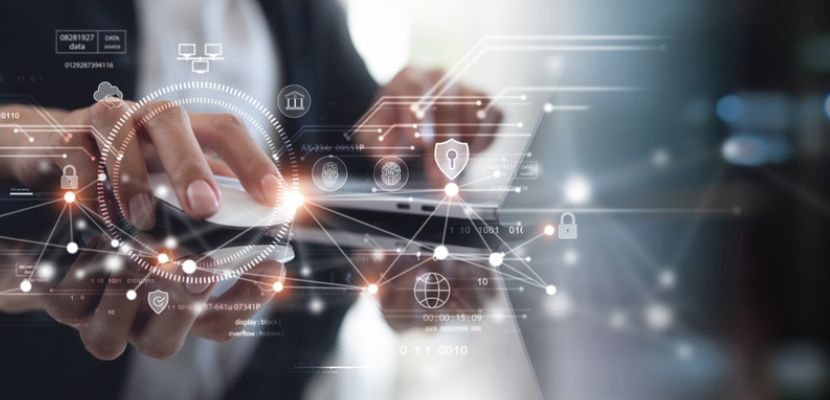Root access, often referred to as root privilege, is the highest level of access permissions given on a computer or network system. It grants users full control over the system, including the ability to modify any file, run all programs, and change system functionalities and security settings. Root access allows users to perform administrative tasks, install or uninstall software, manage user permissions, and secure the system against vulnerabilities.

Root Access in Different Operating Systems
Root access has the same function in all operating systems, which is to allow IT personnel to perform advanced tasks within the company’s system or network. However, the mechanism of obtaining and managing this level of access differs across operating systems.
Root Access in Windows
In Windows operating systems, root access is called “Administrator” access or privileges. Users with Administrator access have the highest level of control over the system, including installing and removing software and modifying system settings. This access level enables IT personnel to manage the computer’s configuration, security settings, and system resources. It also allows them to perform maintenance tasks, apply system updates, and install necessary drivers and software.
Root access comes with a higher potential for security risks. To mitigate them, Windows implements a security feature called User Account Control (UAC) to prevent unauthorized changes to the operating system by asking for confirmation or administrative credentials before system-level actions are approved. Furthermore, Windows uses Access Control Lists (ACLs) for file permissions, offering a granular and detailed approach to managing access rights for users and groups.
Root Access in Linux
In Linux operating systems, root access gives the root user (also known as simply “root”) unrestricted access to files and commands and complete control over software installations, user management, system settings, and security configurations. This access level allows a broad range of capabilities, including updating the kernel, managing network settings, and configuring server applications.
Because of its complete power over the system, root access carries significant security implications. To prevent system damage, data loss, and security risks, Linux distributions encourage the principle of the least privilege. This approach means that users should use standard accounts for daily tasks and only resort to root when necessary. Additionally, tools like sudo (SuperUser DO) or su (Switch User) grant temporary access to perform administrative tasks without risking system-wide changes.
Root Access in MacOS
In macOS, root access, also known as “superuser” privileges, grants the highest level of control to users. A superuser can modify system files, install and remove software, and implement changes that affect all users on the device. Since macOS is built on a Unix-based foundation, root access shares many similarities with Linux, including the ability to perform administrative tasks and ensure tight security control over the system.
By default, root access in macOS is disabled and only activated when necessary. When performing necessary tasks, users typically utilize the “sudo” command within the terminal, which allows them to temporarily elevate privileges. Apple also incorporates security mechanisms, such as System Integrity Protection (SIP), to restrict root access to certain parts of the macOS system, enhancing overall security.
Root Access in Android
In Android, root access is similar to that of Unix and Linux systems. It allows users to override system-level restrictions set by the operating system or the device manufacturer. This level of access allows users to modify system files, remove pre-installed applications, and install apps that require deeper system control for advanced functionalities, such as custom ROMs or kernels.
The process of gaining root access on Android varies between devices due to the differences in hardware configurations and security measures. However, utilizing root access in Android typically involves exploiting vulnerabilities inherent in the OS or bootloader, which voids warranties and potentially exposes the device to security risks. After rooting the device, users must be cautious since this removes protective layers that safeguard the operating system. Tools such as SuperSU or Magisk are frequently used to manage root permissions, as they allow users to grant or deny root access to individual apps.
Root Access Best Practices
Whether using a personal device or enterprise system, following best practices with root access is crucial for maintaining system security and stability. Root access best practices include:
- Using sudo or similar tools instead of logging directly as root. This provides an audit trail of commands while minimizing the risk of accidental system-wide changes.
- Limiting root access by only granting it to users who absolutely require it for specific tasks. For regular everyday activities, it is best to use standard user accounts.
- Implementing strong authentication methods, such as unique passwords and multi-factor authentication. These mechanisms add an extra layer of security.
- Reviewing regularly access rights to adjust permissions as necessary. These reviews will ensure that only authorized personnel have root privileges.
- Using the principle of least privilege by granting only the minimum access level necessary to users. This approach limits potential damage if an account is compromised.
- Monitoring and logging usage keeps track of who is executing commands and for what purpose. Regular reviews of these logs help with early detection of security breaches or misuse.
- Educating users about risks that come with the responsibility of using root privileges. Training on secure practices helps prevent accidents or malicious activity that compromise a system.
- Regularly updating and patching software, operating systems, and applications to enhance security. Malicious actors exploit software vulnerabilities to gain unauthorized root access to systems.
- Backing up important data provides a lifeline in the event of accidental modification or deletion of important files while using root access.